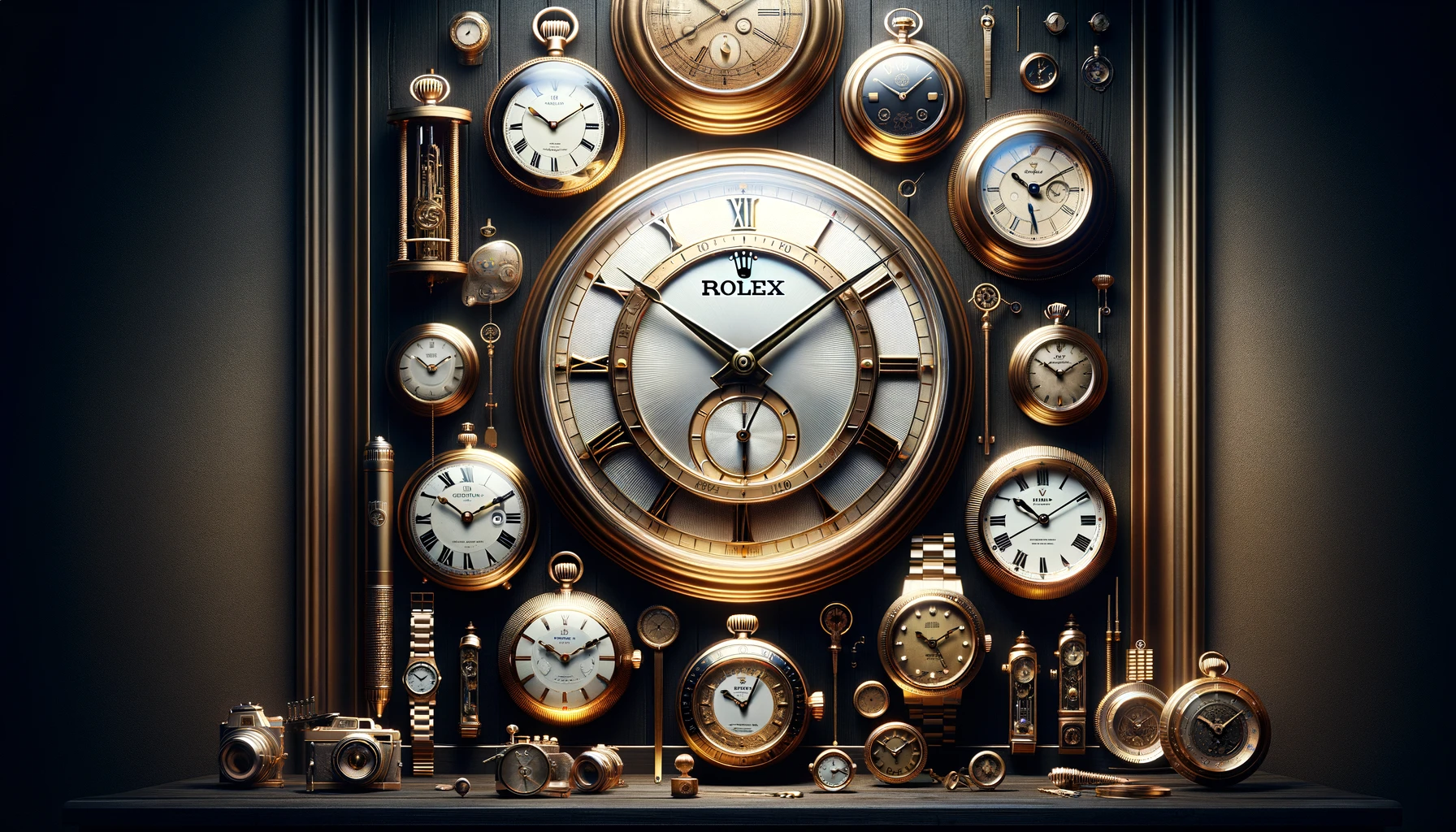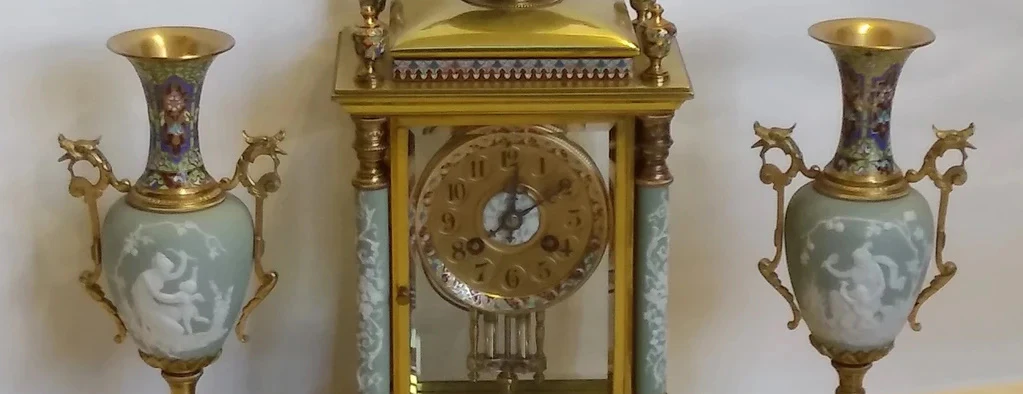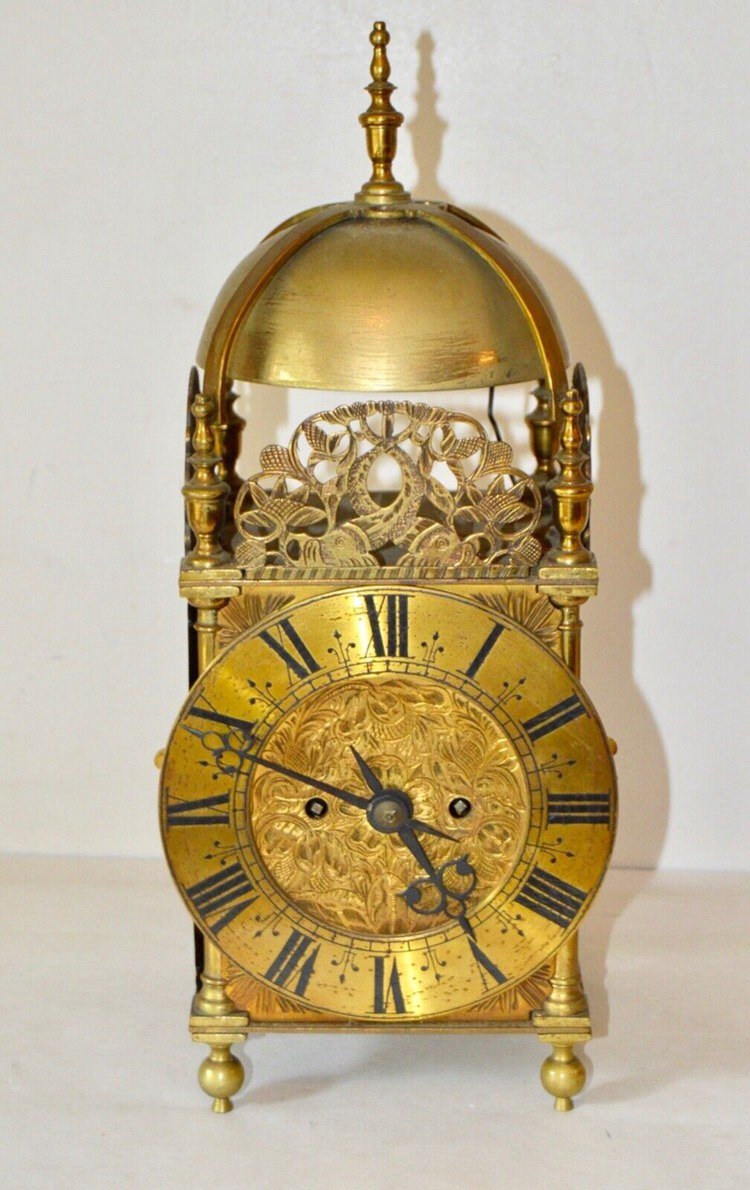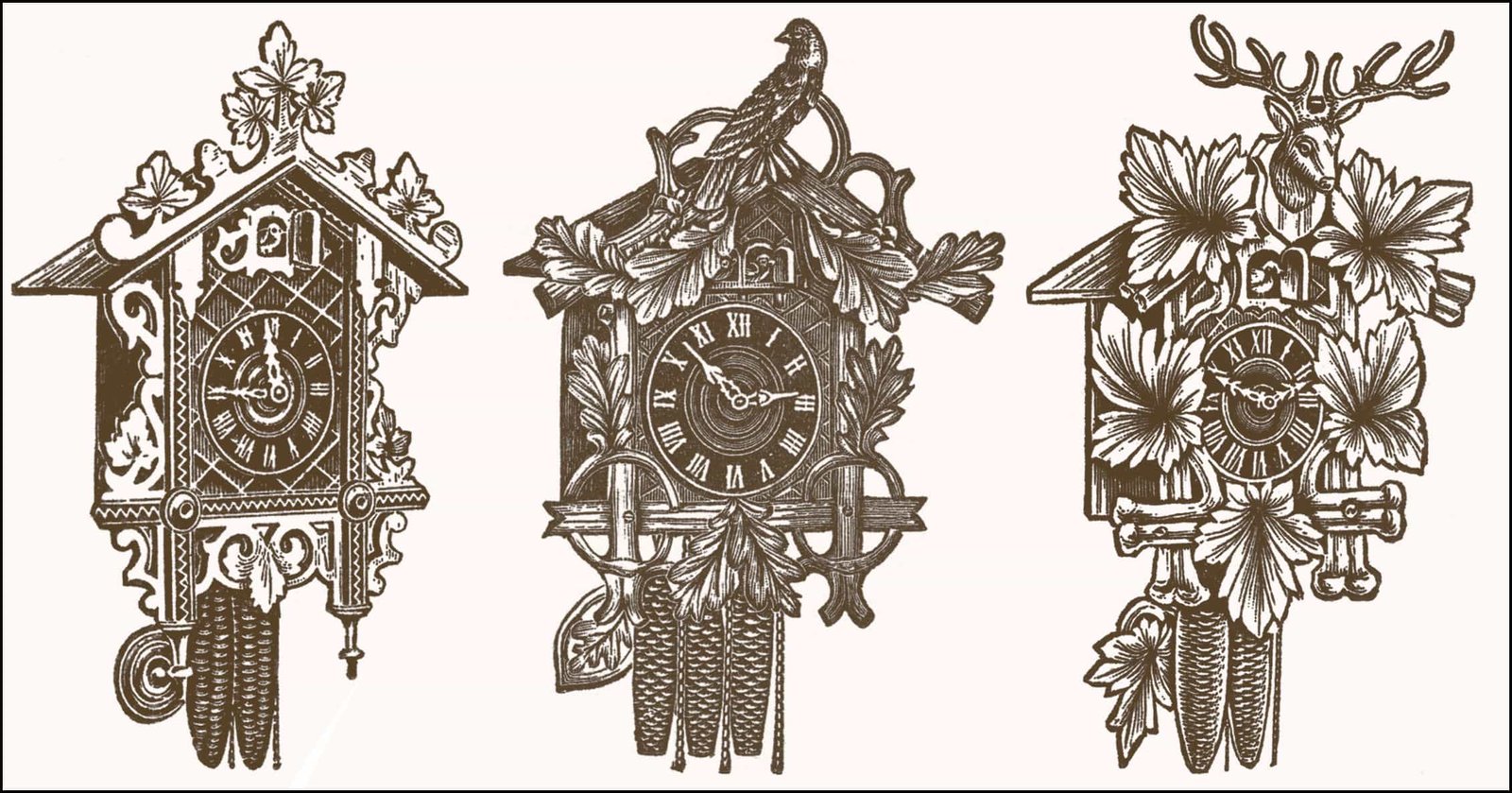Antique clocks hold historical value and timeless beauty, making them highly sought after by collectors. However, identifying and authenticating genuine antique clocks can be challenging, especially with the abundance of reproductions on the market. Understanding the subtle details, from craftsmanship to maker marks, is essential in determining the clock’s authenticity and value.
Here’s a comprehensive guide to help you identify and authenticate antique clocks.
1. Understanding the Types of Antique Clocks
Before diving into the identification process, it’s important to understand the different types of antique clocks. Each type has unique characteristics that make identification easier:
- Grandfather Clocks: These are tall, freestanding clocks with long pendulums, often housed in wooden cases. They became popular in the 17th century.
- Mantel Clocks: Small and decorative, mantel clocks were designed to sit on a shelf or mantelpiece. They typically feature intricate designs and were popular during the 19th century.
- Wall Clocks: Hanging clocks, often used in public spaces or homes. Their designs can vary from simple to highly ornate.
- Bracket Clocks: These are smaller, portable clocks designed to be placed on brackets. Often seen in 18th-century designs, they feature detailed craftsmanship.
Knowing the type of clock you are working with provides the foundation for further authentication.

2. Examining the Clock’s Craftsmanship
The craftsmanship of an antique clock can reveal a lot about its authenticity and value. High-quality materials, precision in construction, and the overall finish are important indicators of an antique clock’s legitimacy.
Materials:
- Wood: Most antique clocks, especially grandfather and mantel clocks, were made from high-quality wood such as oak, mahogany, or walnut. The presence of hand-carved details can be a sign of authenticity.
- Metal: Brass was commonly used for clock mechanisms, pendulums, and dials. Antique clocks may have tarnished brass, which shows signs of age, while reproductions may have shiny, new metal parts.
- Glass: The glass covering the clock face is usually thicker and less uniform in older clocks, due to imperfections in glass-making techniques.
Mechanism:
- Antique clocks were often handmade, so the internal mechanisms may not be as perfectly symmetrical as modern machine-made parts. Look for gears and cogs that show signs of handcrafting.
3. Checking for Maker Marks and Signatures
One of the most reliable ways to authenticate an antique clock is by identifying the maker’s mark or signature. Many clockmakers, especially those from the 18th and 19th centuries, signed their clocks with engraved marks, labels, or stamps.
Where to Find Maker Marks:
- On the Dial: Some clockmakers signed their names on the clock’s dial, usually near the center or around the edge.
- On the Movement: Open the back of the clock to inspect the mechanism. Many clockmakers left their marks on the metal plates or the back of the movement.
- Inside the Case: In some cases, clockmakers would leave signatures or labels inside the wooden case, often at the base or on the door.
4. Identifying Famous Clockmakers
Familiarizing yourself with well-known clockmakers can help you identify valuable antique clocks. Some famous clockmakers include:
- Thomas Tompion: Known as the “father of English clockmaking,” his clocks are prized for their precision and craftsmanship.
- Seth Thomas: An American clockmaker whose clocks, especially from the 19th century, are highly collectible.
- Gustav Becker: A German clockmaker known for his wall and mantel clocks, often stamped with his signature on the movement.
- Junghans: Another prominent German clockmaker, specializing in high-quality wall clocks and alarm clocks.
Researching the maker’s history and noting their typical designs can help confirm a clock’s authenticity.
5. Investigating the Clock’s Provenance
The provenance, or history of ownership, adds to an antique clock’s authenticity. Antique clocks with a clear, documented history of ownership, especially if they’ve been passed down through generations, are more likely to be authentic and valuable.
If possible, ask for documentation that traces the clock’s origin. Auction house records, family histories, or purchase receipts can offer valuable insights into the clock’s past and confirm its authenticity.
6. Dating the Clock
The style, design, and materials of an antique clock can often help to pinpoint the period in which it was made. For example:
- Baroque Clocks (17th-18th Century): Elaborate, ornate, and heavily decorated, often with gilded finishes.
- Victorian Clocks (19th Century): Frequently feature intricate carvings, floral motifs, and a blend of different materials.
- Art Deco Clocks (1920s-1930s): Sleek, geometric designs with the use of chrome, glass, and bold colors.
Knowing the clock’s historical period helps validate whether the design and features align with the era it claims to be from.
7. Avoiding Common Reproductions
Reproductions of antique clocks are common, and while some are well-made, they don’t carry the same historical value. Watch out for:
- Too-new Materials: If the clock appears too pristine, with unblemished wood or shiny brass, it might be a reproduction.
- Misleading Maker Marks: Some reproduction clocks falsely bear the names of famous makers. Always cross-check the mark with known historical records.
- Mass Production Features: Reproductions often lack the handcrafted details of genuine antiques. Machine-made components or overly symmetrical parts may be a sign of a fake.
Conclusion: The Art of Identifying Authentic Antique Clocks
Identifying and authenticating antique clocks requires a keen eye for detail, historical knowledge, and an understanding of craftsmanship. From examining materials to locating maker marks, every element of the clock provides clues to its authenticity. Whether you’re a seasoned collector or a beginner, taking the time to properly identify antique clocks ensures that you’re investing in a genuine piece of history.





kixGiv fnRktNWh oQJcRkRu FKXv cWOtq
Hey, thought I’d share my experience with 68bet1. It’s a solid platform with a pretty good selection of games. Might be your new favorite spot! Give it a go: 68bet1
Trying to find the main Bong88 site? Trangchubong88 might be the place. Gimme the real deal, baby! trangchubong88
Wenn du wissen willst, welche Casinos wirklich grenzenloses Spielen bieten, bist
du hier richtig. In deutsch regulierten Casinos bist du durch
Spin- oder Einsatzlimits stark eingeschränkt und kannst außerdem nur Slots zocken. Casinos ohne Begrenzungen bieten innovative
Zahlungsmöglichkeiten wie E-Wallets oder Kryptowährungen an, mit denen man seine Gewinne
oft innerhalb weniger Stunden erhält. In Casinos mit Limits dauert es häufig mehrere Tage, bis
Gewinnauszahlungen bearbeitet werden. In Casinos ohne Limit bekommst
du dagegen oft maßgeschneiderte VIP-Aktionen, höhere
Cashback-Raten oder exklusive Freispiele. Normale deutsche Casinos
zahlen bei kleinen Einsätzen meist keine sonderlich attraktiven Boni.
Sollten Sie sich nach unserer Gegenüberstellung für ein Casino ohne Limit und ohne
deutsche Lizenz entschieden haben, ist es umso wichtiger, dass Sie Ihre eigenen Limits festlegen und diese einhalten, um Ihrem eigenen Spielerschutz höchste Priorität
einzuräumen. Bevor Sie sich für ein Online Casino entscheiden, lohnt
sich ein Blick auf die grundlegenden Unterschiede zwischen Casinos mit deutscher Lizenz
und legalen Casinos ohne deutsche Lizenz und somit auch ohne Einsatzlimit.
Sie bieten Spielern ein Maß an Freiheit, Flexibilität und Vielfalt, das
in regulierten Märkten oft fehlt. Dadurch können beste
Casinos ohne OASIS ihre Dienste auch in Ländern mit strengen Regeln anbieten, oft
über Umwege wie VPNs oder alternative Zahlungsmethoden. Casinos ohne Limit agieren meist mit
internationalen Lizenzen, was es ihnen erlaubt, Spiele im Casino
ohne Einschränkungen anzubieten, allerdings unter anderen rechtlichen Rahmenbedingungen als in Deutschland.
Online Casinos ohne Einsatzlimits verzichten bewusst auf solche
Beschränkungen.
High Roller und Vielspieler genießen so
komplett neue Möglichkeiten beim Besuch im Online Casino.
In den besten Casinos ohne Limit kannst du ohne Einschränkungen spielen.
Diese Plattformen unterliegen nicht dem deutschen Glücksspielstaatsvertrag und stehen daher nicht auf der offiziellen Whitelist der GGL.
Diese Beschränkung gilt nicht nur für Casinos, sondern für alle in Deutschland lizenzierten Glücksspielanbieter, also zum Beispiel auch für Sportwettenanbieter.
Anbieter ohne Limit sitzen in der Regel im Ausland und unterliegen damit nicht den deutschen Vorgaben. Anbieter ohne dieses Limit
sitzen in der Regel im Ausland und unterliegen nicht dem deutschen Glücksspielstaatsvertrag.
References:
https://online-spielhallen.de/beste-online-casinos-deutschland-top-10-nov-2025-2/
Der einzige Haken ist die Notwendigkeit einer Mindesteinzahlung von 10€, um die Umsatzbedingungen zu erfüllen. Die extrem niedrige Umsatzanforderung von nur 5x
ist ein Alleinstellungsmerkmal und bietet eine realistische Chance, den Bonus in echtes Geld umzuwandeln. Spätestens vor Ihrer ersten größeren Auszahlung (oder wenn Ihre Transaktionen einen Wert von 1.000€ erreichen) werden Sie aufgefordert, Ihre Identität zu verifizieren.
Unter der Kategorie Brettspiele sind verschiedene
Tischspiele zu finden. Mit dabei sind Automatenspiele,
Megaways, Bonuskauf-Spiele, Tischspiele und Insta-Spiele. Es kann vielleicht auch einmal im Verde Casino
50 Freispiele ohne Einzahlung für Bestandskunden geben. Für Bestandskunden werden auch einige Bonusaktionen zur
Verfügung gestellt. Im Verde Casino gibt es aber nicht nur den Neukundenbonus.
Außerdem ist es etwas verwirrend, dass die Mindesteinzahlung
der verschiedenen Einzahlungen variiert.
Der Vorteil von Tischspielen liegt darin, dass der Hausvorteil oft geringer ist als bei Slots und geschickte Spieler
durch die richtige Strategie ihre Gewinnchancen verbessern können. Bei Tischspielen wie Roulette, Blackjack
oder Baccarat werden hingegen nur 15% angerechnet.
Wenn Sie also mit einem Grundeinsatz von 0,20€
spielen und die Bonusrunde für 20€ kaufen möchten, würde dies die 5€-Grenze überschreiten und gegen die Bonusbedingungen verstoßen.
References:
https://online-spielhallen.de/novoline-casino-bewertung-dein-umfassender-ratgeber/
TubiTV offers a wide range of movies, from classic films to recent releases.
The platform features content from major Hollywood studios, including MGM, Lionsgate, and others, as
well as a growing selection of Tubi Originals. TubiTV boasts one of the
largest collections of free movies and TV shows available online.
The platform is available across a wide range of devices, including
smartphones, tablets, smart TVs, streaming devices, and web browsers.
WIth a catalog full of free movies and TV shows across all genres, there’s something for everyone on Tubi.
If you’re tired of browsing through categories and just want to watch TV
for free online then Tubi is the place for you.
“If the company goes into administration, [workers] want the support of their government to ensure the doors stay open.” “They’re not highly paid people — they’re struggling with the cost of living as everyone else is and they can’t afford to take a pay cut.” Shares in Star Entertainment have been suspended from
trading on the stock exchange after it failed to lodge its financial results.
Personalise the news and Eligible shareholders who wished to retain their Unmarketable Parcel
were required to return a Share Retention Form to the share registry by the Closing Date.
The Small Holding Sale Facility was conducted in accordance with
The Star Entertainment Group’s Constitution and the Australian Securities
Exchange Listing Rules that enables all listed companies to sell shareholdings valued at less than $500
(Unmarketable Parcel).
Unlike subscription-based platforms like Netflix or Hulu, TubiTV is entirely free,
supported by advertisements, and does not require a monthly fee or account to
start watching. While it does offer a great selection of TV shows, Tubi has a reputation for being the best
place to watch free movies online. Tubi has an extensive library with content across all genres
all for free and available to watch now. You can watch live TV for free on Tubi
across a host of different channels.
References:
https://blackcoin.co/how-to-play-the-big-red-pokies-the-kiwi-way/
Traditional slot fans can enjoy Cash Crazy Slots, which captures the
essence of classic casino gaming through familiar symbols
like sevens, cherries, and bars. This strategy builds
community engagement while providing additional value to dedicated players.
Cashman Casino leverages social media platforms to extend the free play experience beyond the game itself.
This system creates a sense of progression and achievement that
keeps players engaged long-term. The developer has not yet indicated which accessibility features this app supports.
Get our NEW games in our latest update!
Connect with the game through official social media
accounts, such as Facebook, Instagram, and Twitter, to
obtain Cashman Casino Free Coin Links. For smaller and
best rewards, you look out for Cashman Casino 1 Million Free Coins deals.
Most of the times such offers are announced within the
application or on the official pages so players must stay updated with these changes.
These loyalty coins grow with time, thus requiring constant playing.
That is why you will find that gamers have their data and transactions
secured from hackers at the online casino. The slots at this casino are very diverse, even though they are all produced by Aristocrat.
There are hundreds of free Cashman Casino games at your disposal, and they are
all developed by Aristocrat. However, the more rewards you collect overtime,
the more you will move up a multiplier status bar that goes as high as a 10× multiplier.
References:
https://blackcoin.co/royal-reels-casino-australia-in-depth-review/
5,000+, including pokies, table games, live dealer games, 1Red exclusives,
and jackpots. Unlike plenty of other Aussie casino
sites, 1Red had a dedicated table games category that made it easy
for our team to locate and try all the blackjack and roulette variants.
7,000+, including pokies, table games, live dealers, instant
games, lottery, and keno. Even if they require some deposit, we always recommend
players exploit these offers, especially if the number of
free spins is high. The crucial mistake that most players make here is
that they deposit too little, not taking full advantage of the offer.
No matter if it’s table games, slots, or
live shows, you must be able to find everything and dive into hundreds of titles quickly.
For that reason, we ensure that the casinos we recommend have stellar reputations and are
audited by authorities to provide a fair gambling experience.
” This means that just for depositing $30 into the casino on a Tuesday, you can claim a bonus that will double your deposit to a maximum of $100. Note that it’s common for this type of bonus to come with a minimum deposit requirement, and even time limits. Most probably, you will see this type of bonuses as small cash prizes or spins on a slot game. When playing with bonuses you always have to check for the terms and condition. Casino bonuses come in different shape or form, but they are all here to give you even more to play with.
Finding the best instrument for your casino real money Australia account means balancing speed, convenience, and transaction limits. To help you pick the right real money casino Australia for you, our team broke down the main differences below. Instant win games are perfect for players who want fast action without complex rules. Our team has found a good mix of options in various casinos, from daily cash games for beginners to big weekly tournaments. Poker is a classic game of skill, and Aussie sites offer different ways to play. You can find everything from classic 3-reel games to modern video pokies with bonus rounds and massive progressive jackpots.
References:
https://blackcoin.co/level-up-casino-login-guide/
King Johnnie casino doesn’t charge deposit fees, though payment providers may apply their own processing
charges. Access the cashier section through your account dashboard
or the king johnnie app. Live dealer games contribute 10% with the
exception of live blackjack, which doesn’t contribute toward wagering
requirements. VIP tiers unlock additional benefits including
personal account managers, faster withdrawals, and exclusive king johnnie bonus codes.
All bonuses come with clearly stated terms, including wagering requirements and
game restrictions. The slots section contains over 1,800 titles ranging from classic three-reel games to modern video slots with
complex bonus features.
Staying in control is vital, and King Johnnie makes the
responsible gaming tools easy to find on mobile. Even if you’re on a less common operating system, as long as your browser supports standard
web tech, you should be able to play without issues. They’re usually pretty
quick to reply-often under two minutes-which is crucial if
you’ve got an issue with a deposit or a frozen game.
It opens as an overlay, so you can chat with support without
navigating away from your game. The main way to talk
to them is the 24/7 live chat, which works well on mobile.
References:
https://blackcoin.co/65_the-top-5-usa-online-casino-vip-programs-2022-exclusive-list_rewrite_1/